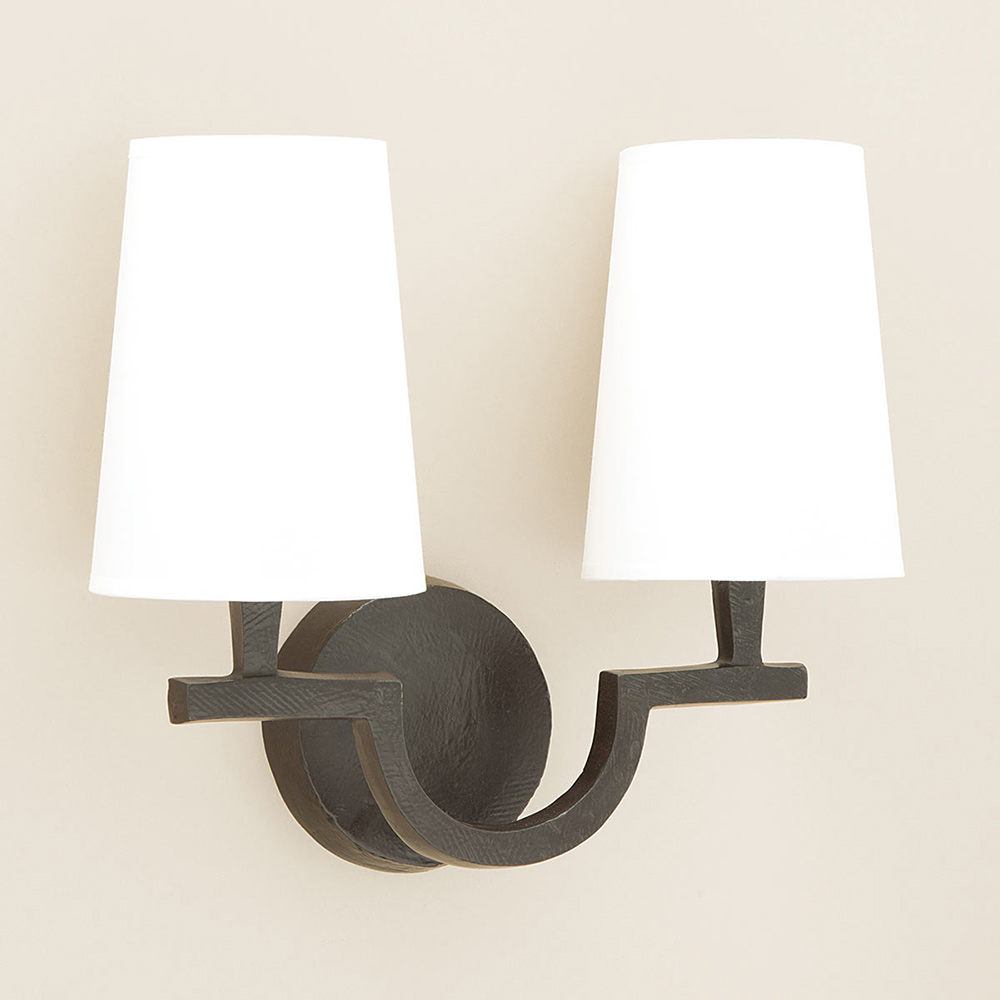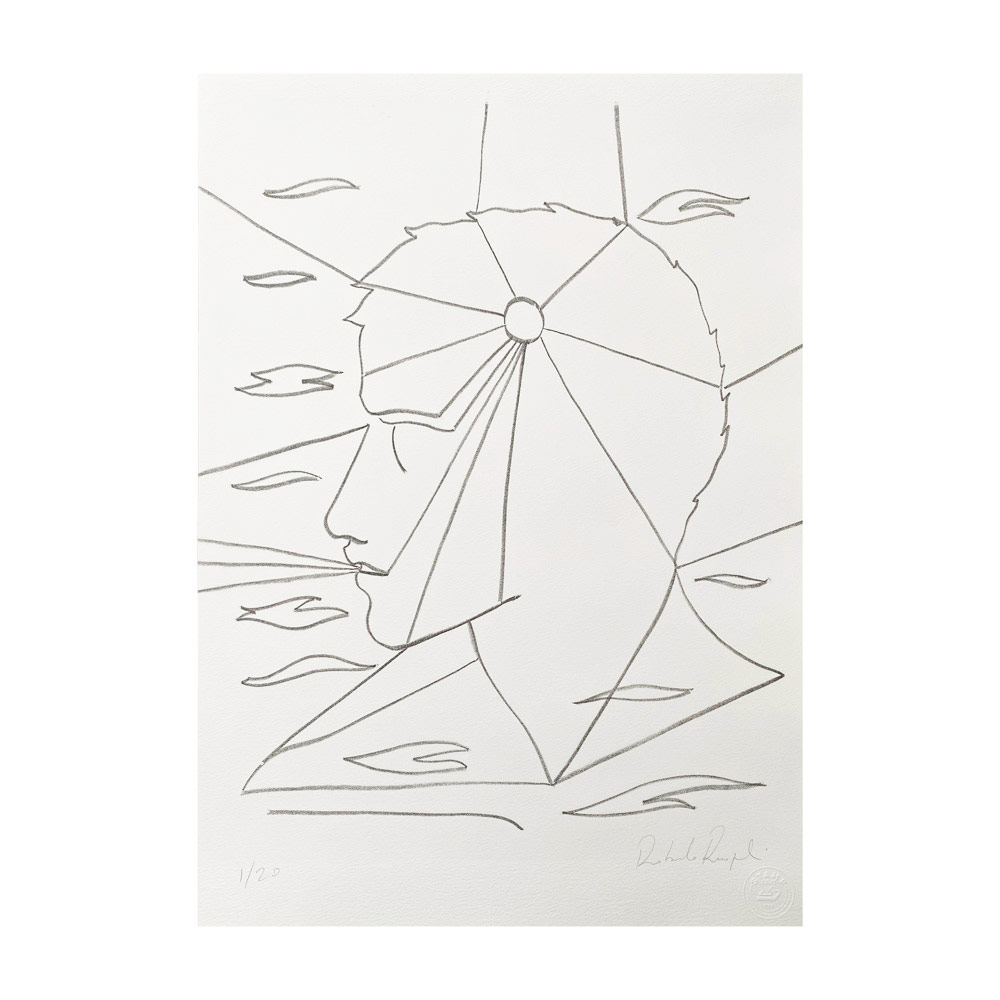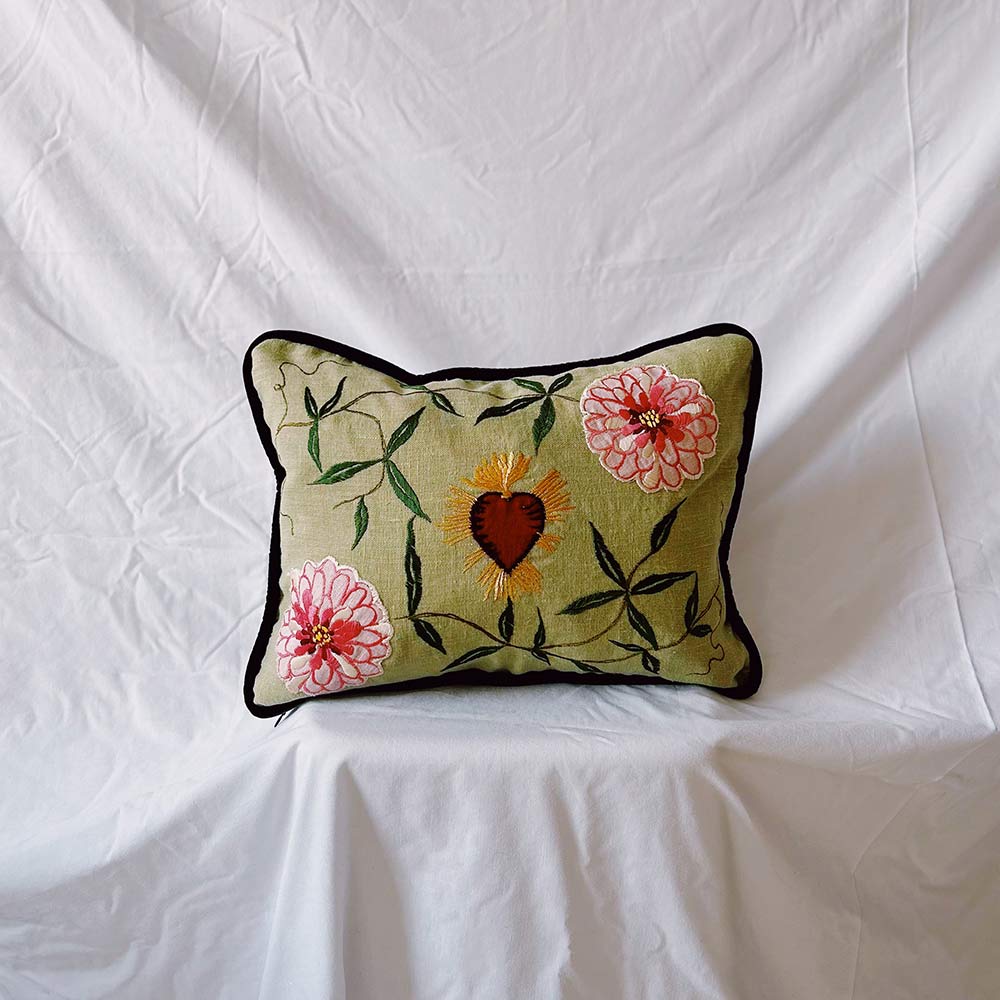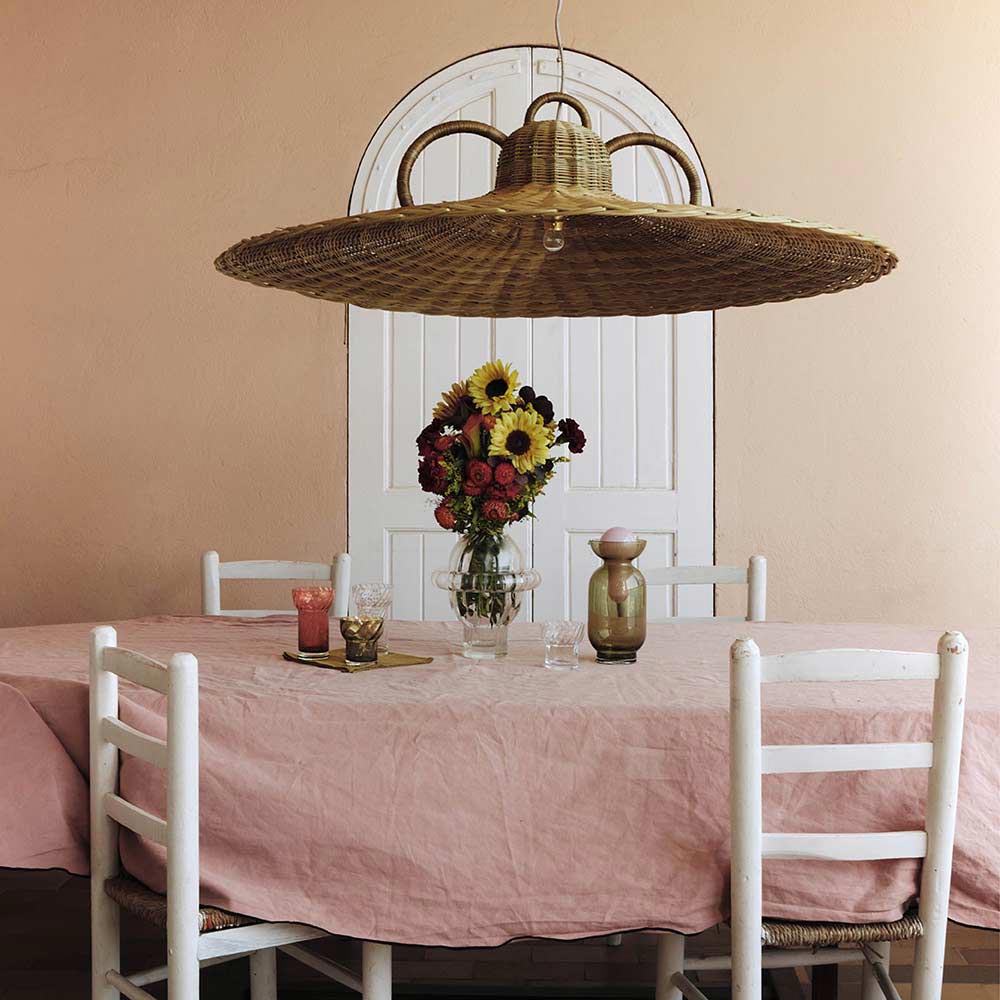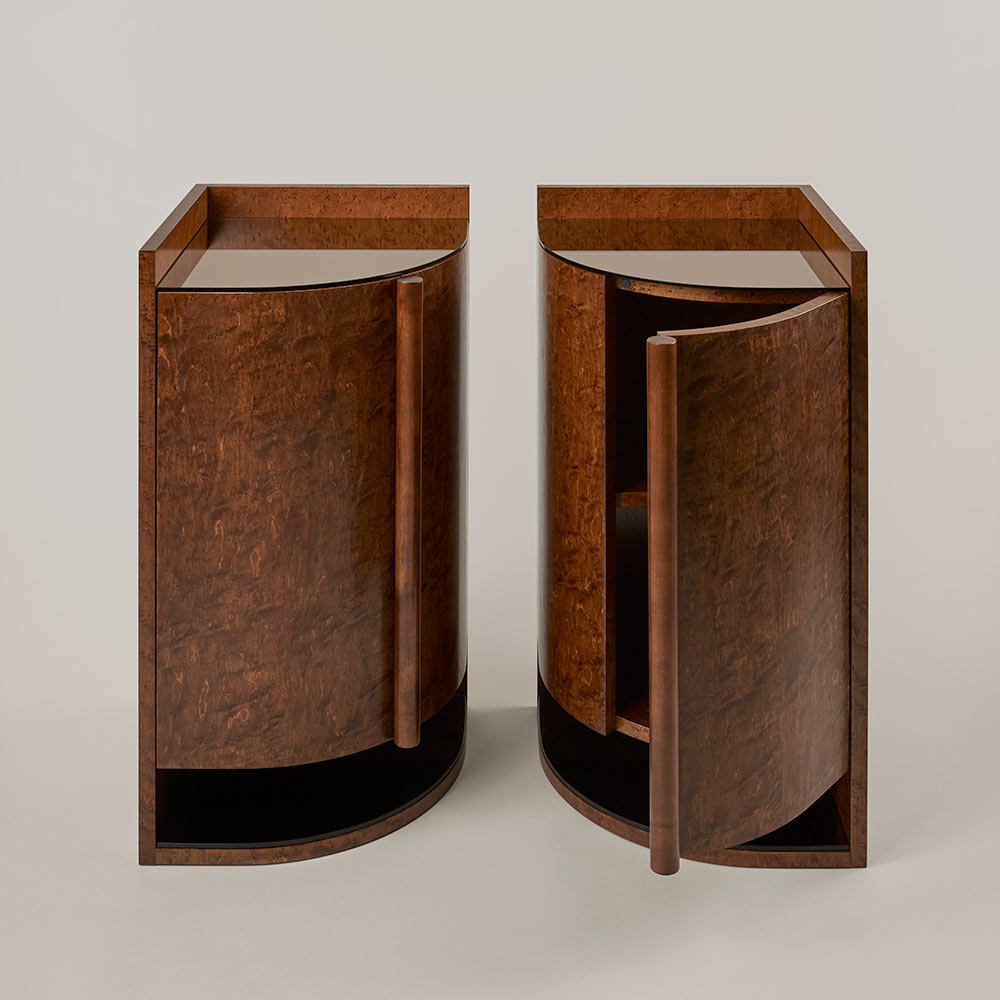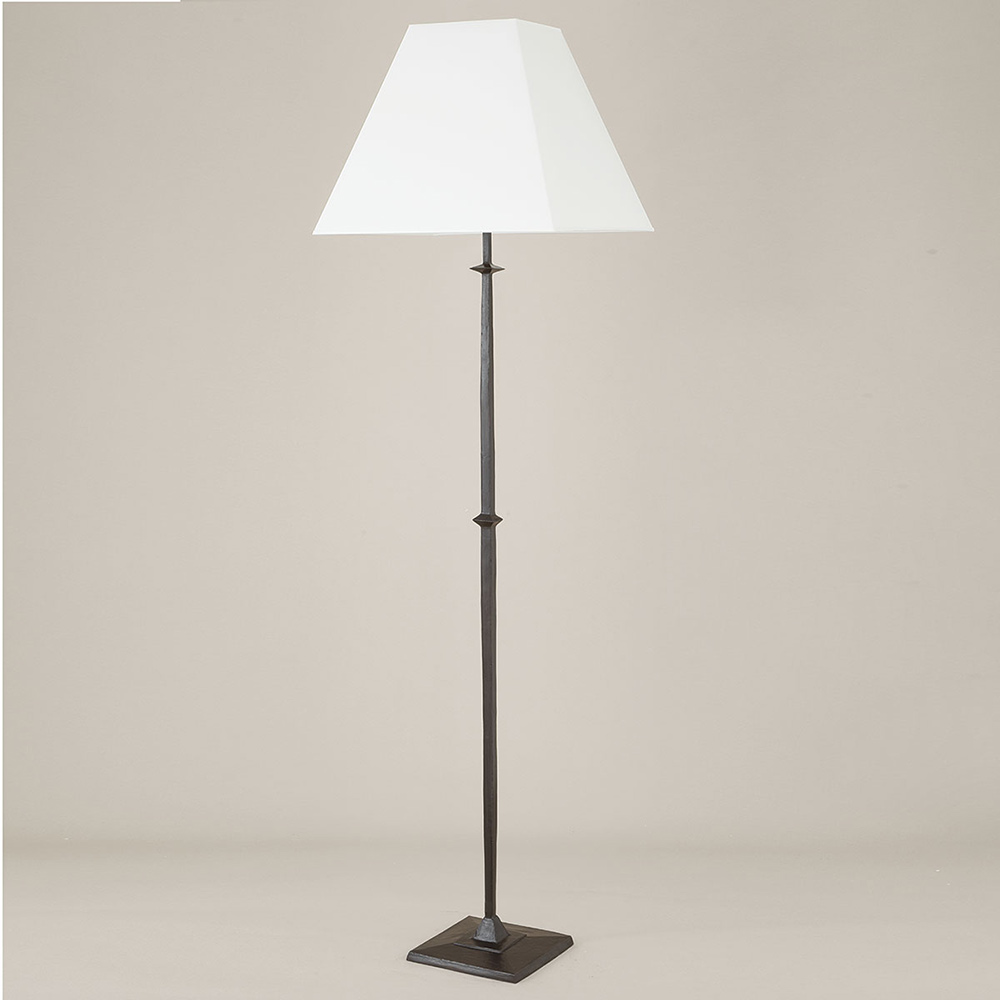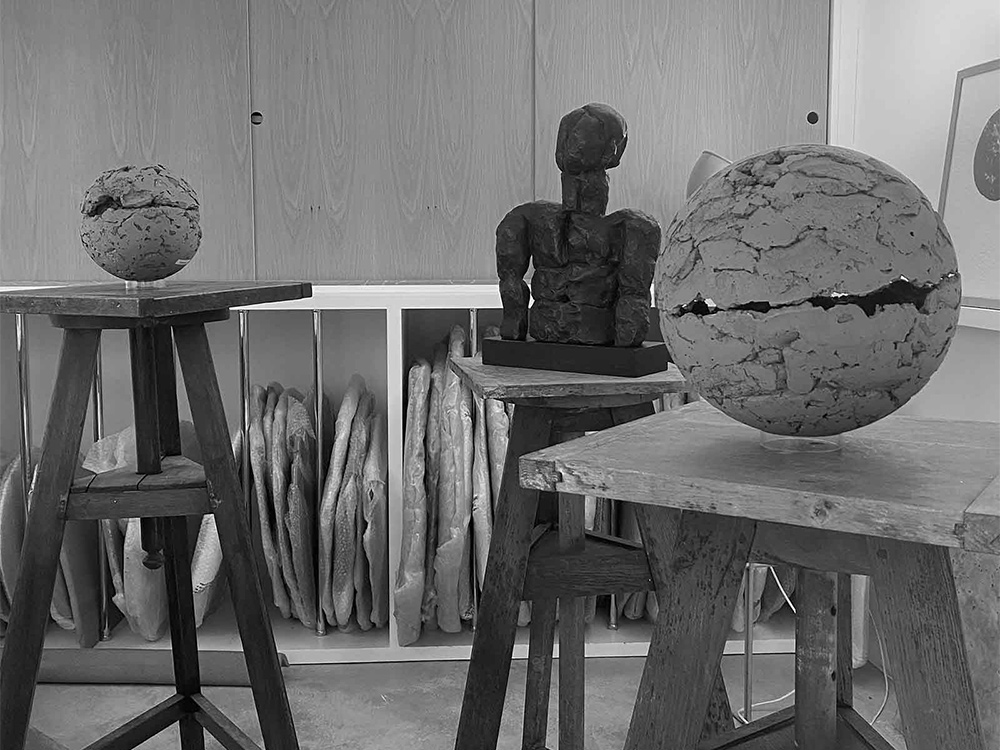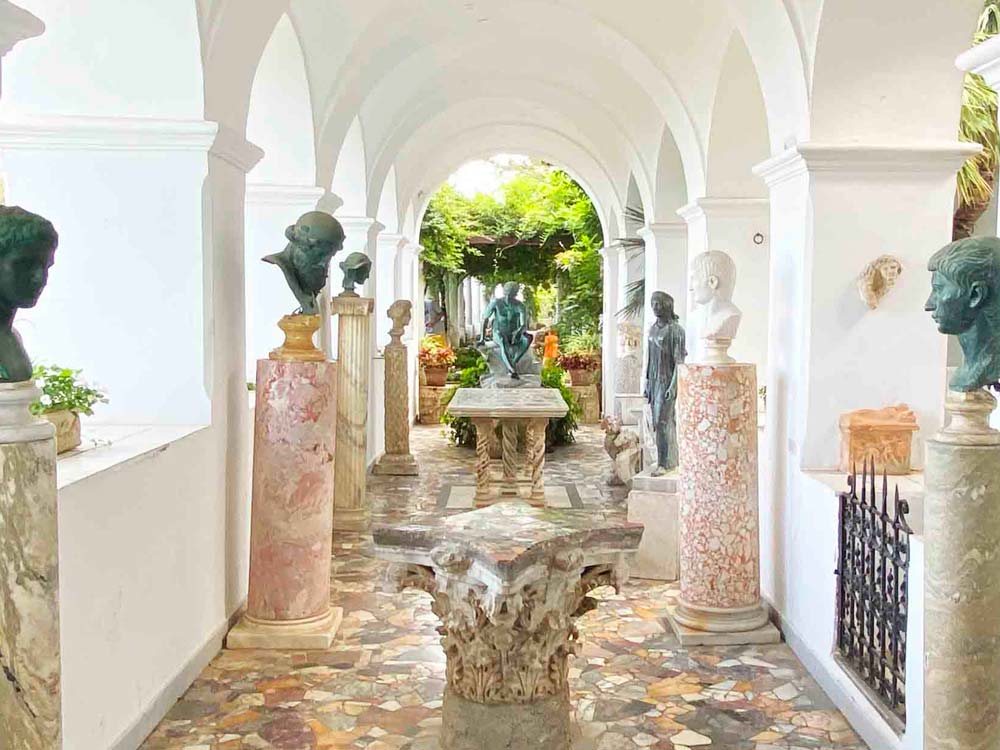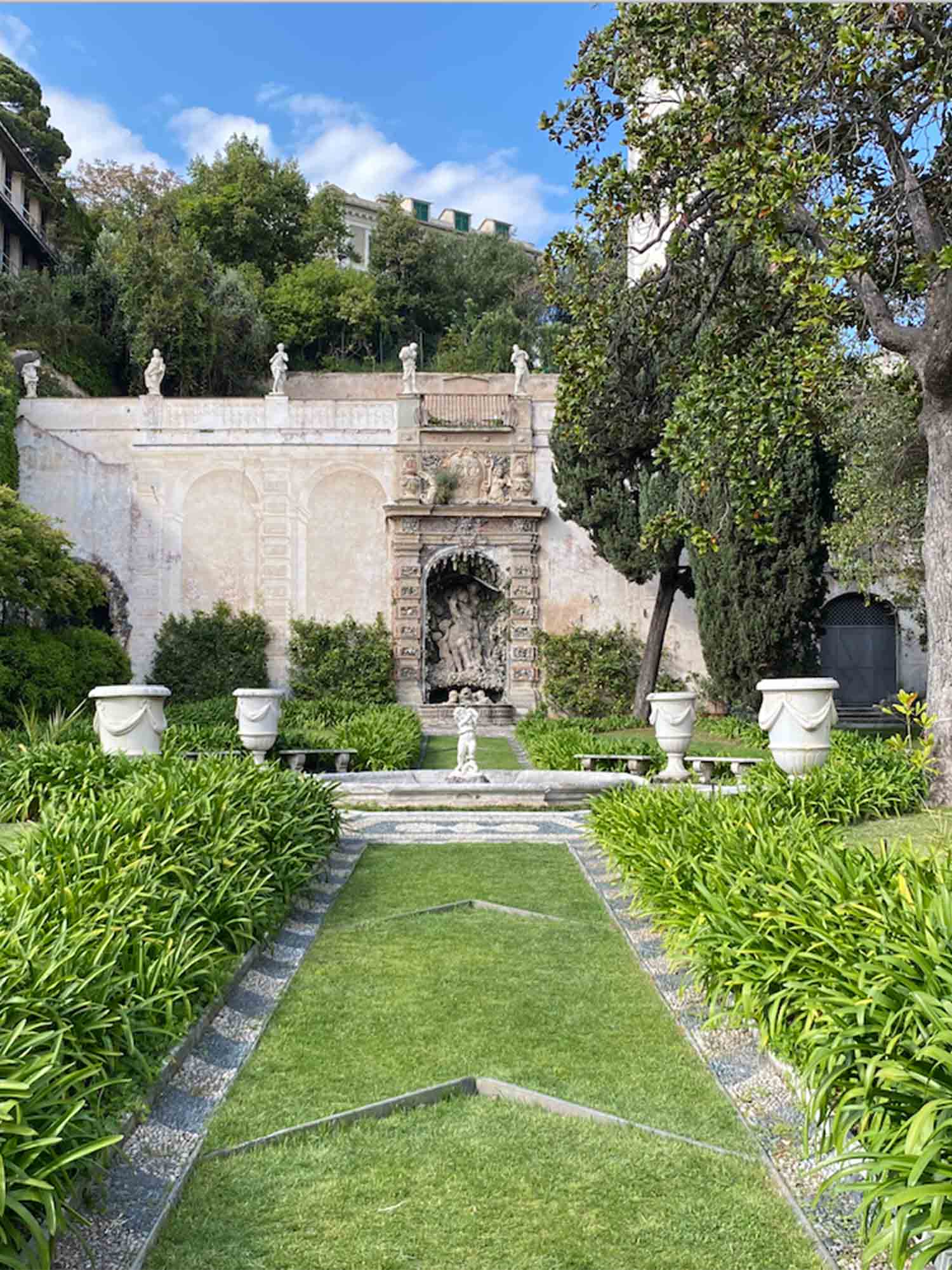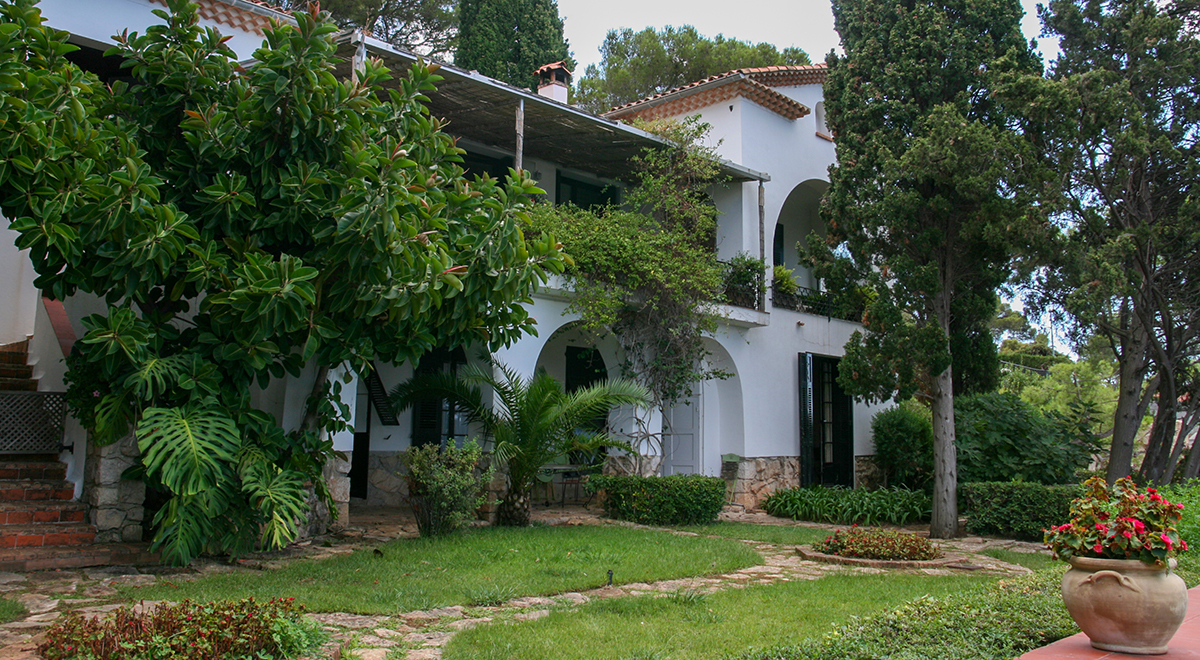
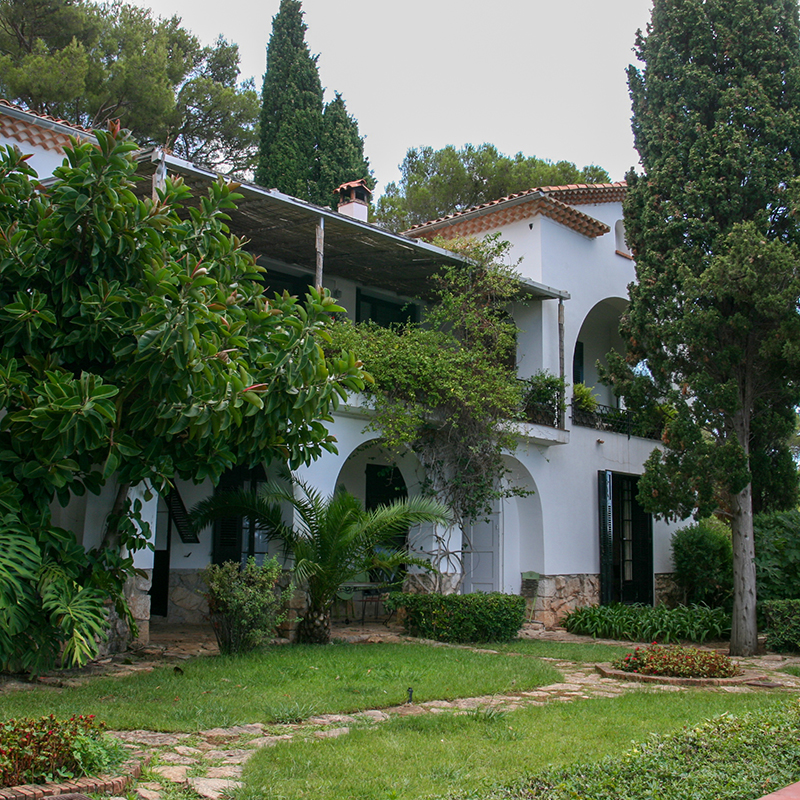
Villa Santo Sospir | The Villa Tattooed by Jean Cocteau
Villa Santo Sospir was bought by Alec Weisweiller in the 1940s, who had promised his wife Francine her dream house in the South of France if they survived the war. At the time it was one of the few villas overlooking the sea next to the lighthouse of St Jean Cap Ferrat. The name “Santo Sospir” comes from the traditional name of St Jean Cap Ferrat, Cap Saint Sospir, named after a sixth century monk who had lived in the area.
In Spring 1950, Francine Weisweiller invited Jean Cocteau, who had just finished Les Enfants Terribles, for a week’s holiday in the villa, together with his companion and adopted son, Edouard Dermit. Cocteau felt restless after a couple of days and asked Francine’s permission to do a drawing of Apollo on the wall above the fireplace. This was followed by two “priests of the sun” on either side, closely resembling the fishermen of nearby Villefranche, wearing traditional hats and carrying their nets.
“Quand on décore un mur, on décore les autres” (Once one decorates one wall one decorates all the others) Henri Matisse. Jean Cocteau’s one week stay extended into twelve years and progressively each wall in the house was painted and frescoed or “tattooed” with figures inspired by Greek mythology.
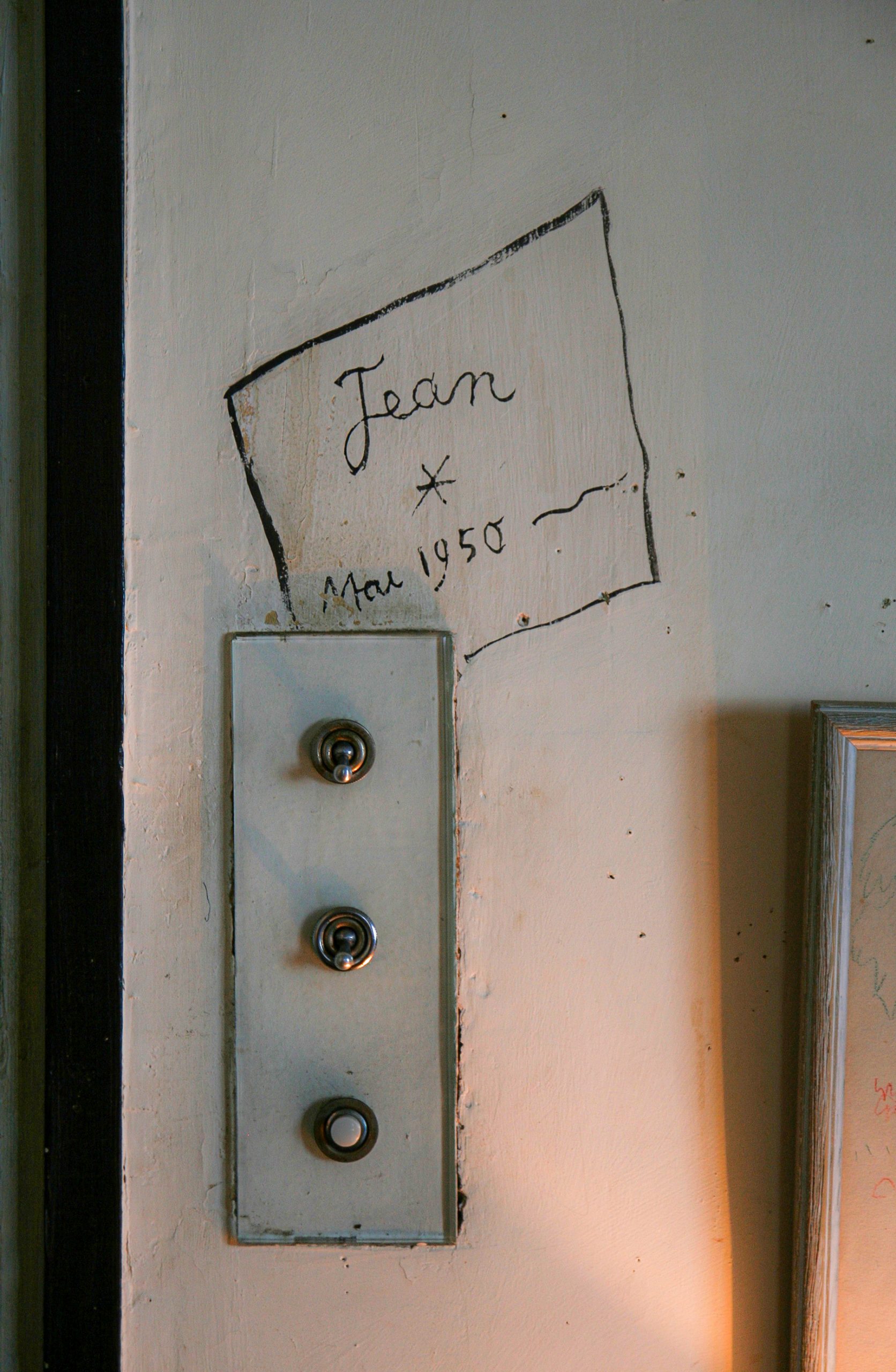

Cocteau did the entire house without sketches, drawing directly on the walls and on or around the furniture. He drew first in charcoal, then in tempera – a paint made from pigments mixed with raw milk, used since Antiquity for its durability and the vibrant finish of its colors. The themes dear to the poet were those of the Mediterranean – its fishermen, the sun, the night – and above all, Greek mythology.
“The walls didn’t need to be dressed, they had to be drawn on like skin,” he explained. “That’s why I treated the frescoes linearly, with skin-toned colours to bring out the tattoos. Santo Sospir is a tattooed villa.“
After the walls, Cocteau found the ceilings too white: he adorned them with geometric motifs in pastel tones. He also created two mosaics for the entrance patio (a serpent, two faces and a head of Orpheus), then in 1953 gave Francine a tapestry: Judith and Holofernes, created in Milly-la-Forêt. The tapestry still hangs in the wicker-covered dining room, along with rattan furniture.
All the furniture and fabrics were selected in close collaboration with Madeleine Castaing, renowned decorator and friend of Francine, whose refined taste and expertise helped carry forward the decorative momentum begun by Cocteau.
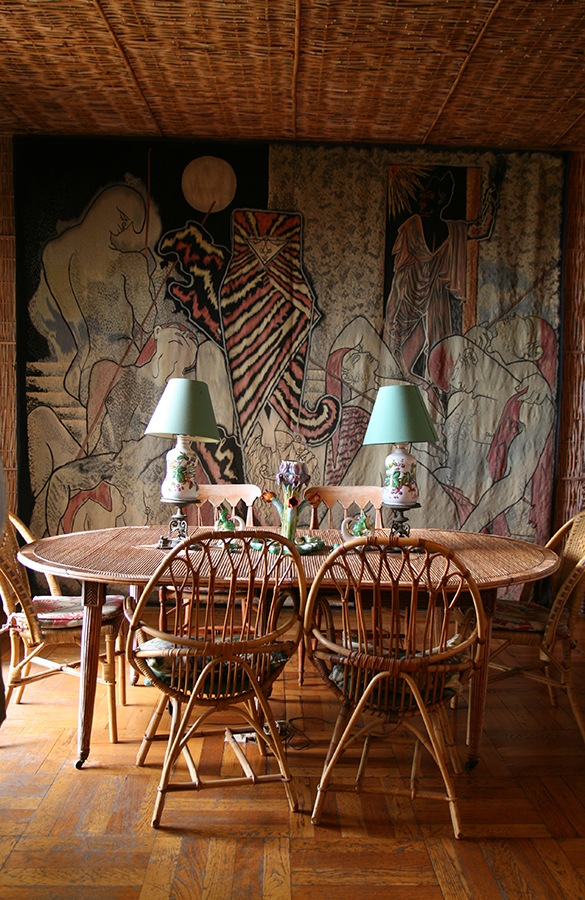
In Francine Weisweiller’s bedroom, a nymph prepares to punish Actaeon, who had surprised Diana at her toilette. A mythological shepherd watches over her bed. The bedroom of her daughter Carole was also painted by Cocteau.
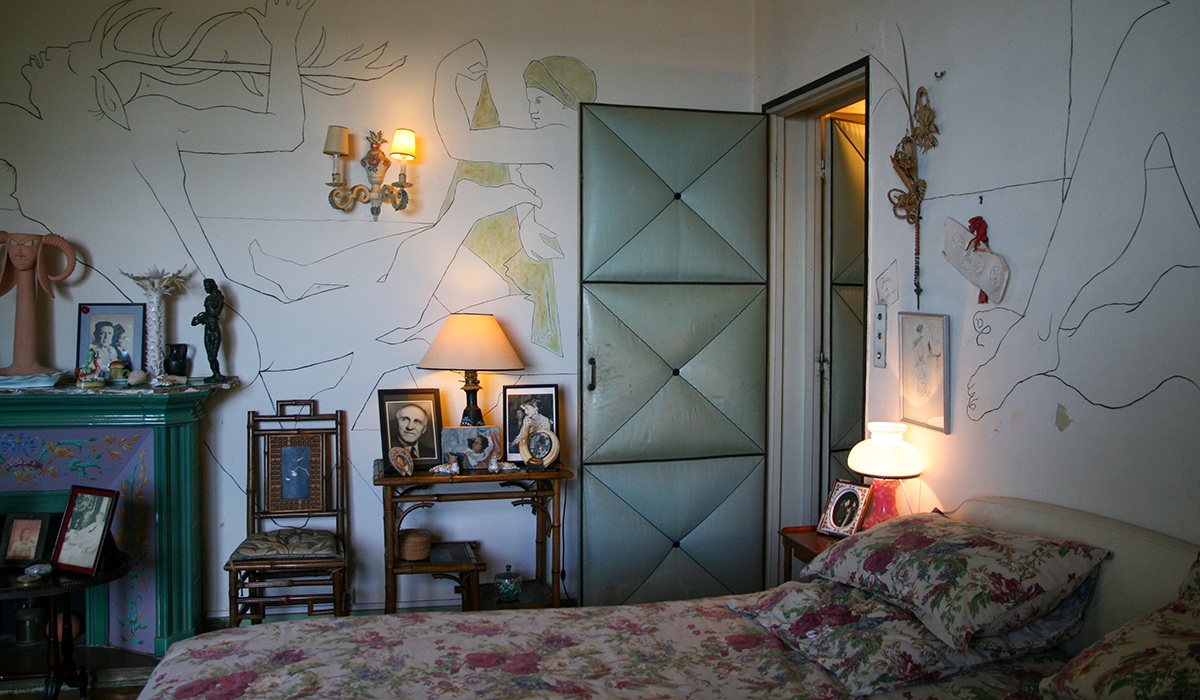
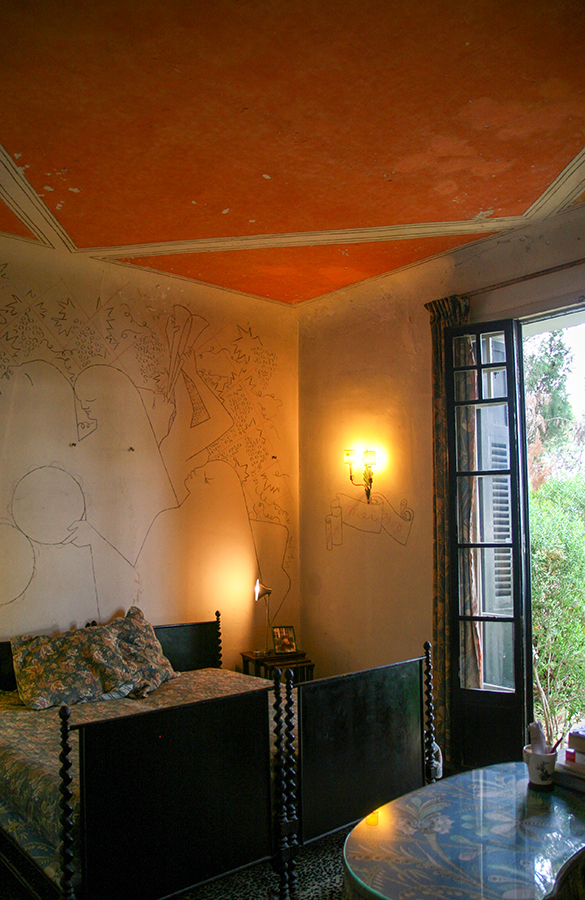
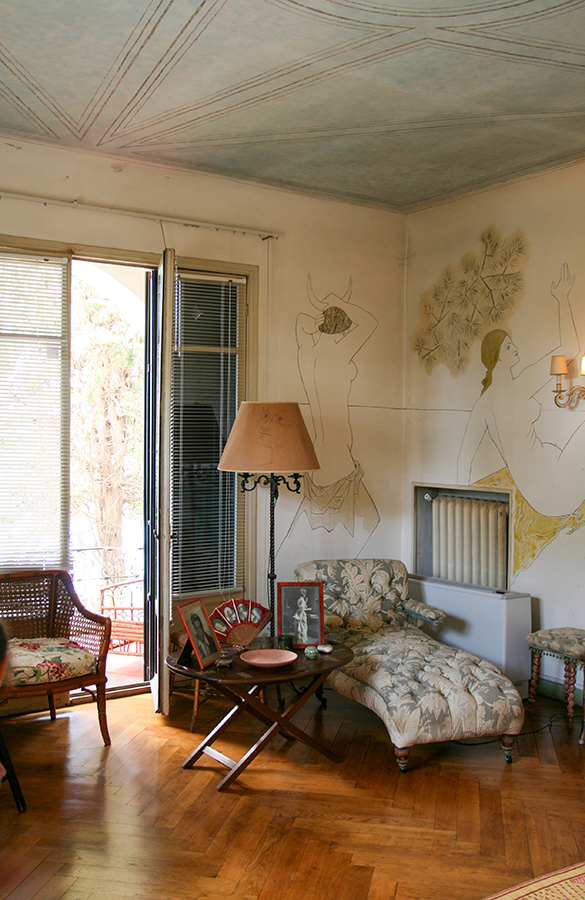
Eric – Francine’s former nurse, who later became the villa’s caretaker and welcomed us for the visit – remembers the cocktails Cocteau would prepare for passing guests: Pablo Picasso and Jacqueline, Coco Chanel, Greta Garbo, Francis Poulenc…
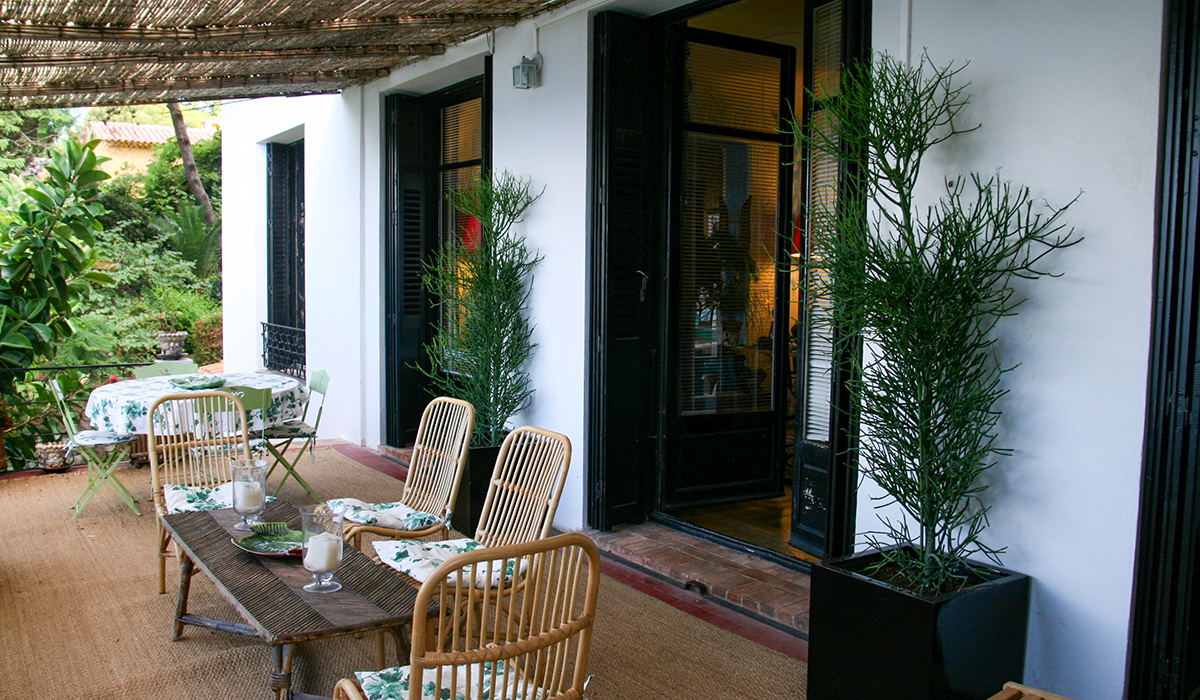
“Picasso, Matisse, Chagall, and I – on this coast where Renoir once lived – we tried to overcome the spirit of destruction that ruled the time. We adorned the surfaces men dream of destroying. Perhaps the love of our work will protect them from the bombs.” Jean Cocteau
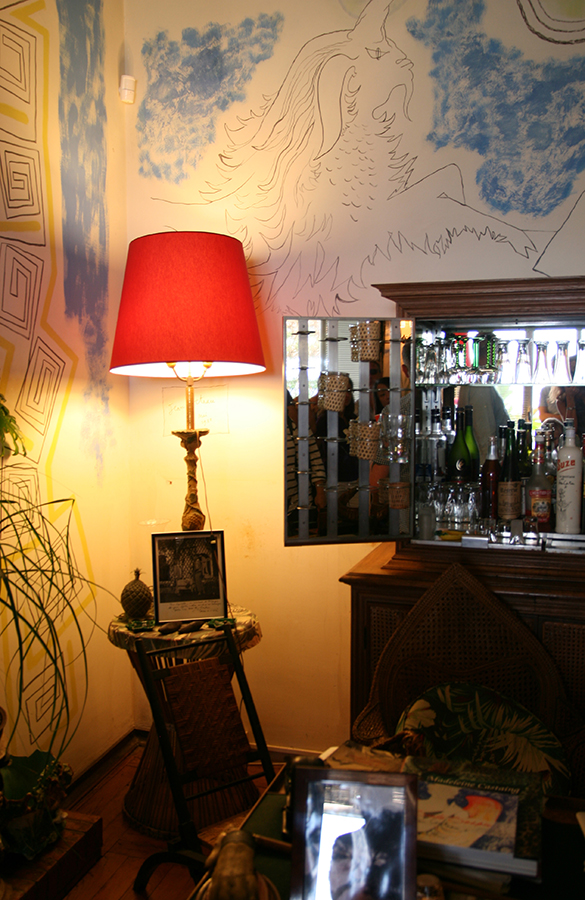
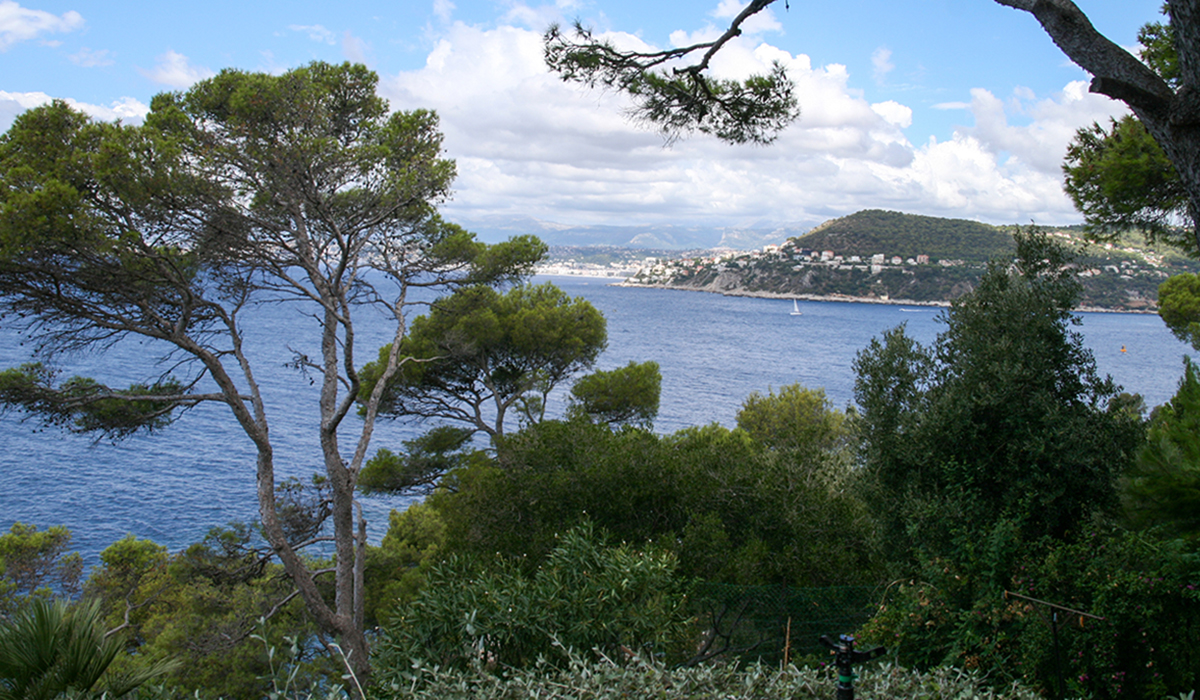
Shop the Look
Villa Santo Sospir | The Villa Tattooed by Jean Cocteau
Villa Santo Sospir was bought by Alec Weisweiller in the 1940s, who had promised his wife Francine her dream house in the South of France if they survived the war. At the time it was one of the few villas overlooking the sea next to the lighthouse of St Jean Cap Ferrat. The name “Santo Sospir” comes from the traditional name of St Jean Cap Ferrat, Cap Saint Sospir, named after a sixth century monk who had lived in the area.

In Spring 1950, Francine Weisweiller invited Jean Cocteau, who had just finished Les Enfants Terribles, for a week’s holiday in the villa, together with his companion and adopted son, Edouard Dermit. Cocteau felt restless after a couple of days and asked Francine’s permission to do a drawing of Apollo on the wall above the fireplace. This was followed by two “priests of the sun” on either side, closely resembling the fishermen of nearby Villefranche, wearing traditional hats and carrying their nets.
“Quand on décore un mur, on décore les autres” (Once one decorates one wall one decorates all the others) Henri Matisse. Jean Cocteau’s one week stay extended into twelve years and progressively each wall in the house was painted and frescoed or “tattooed” with figures inspired by Greek mythology.
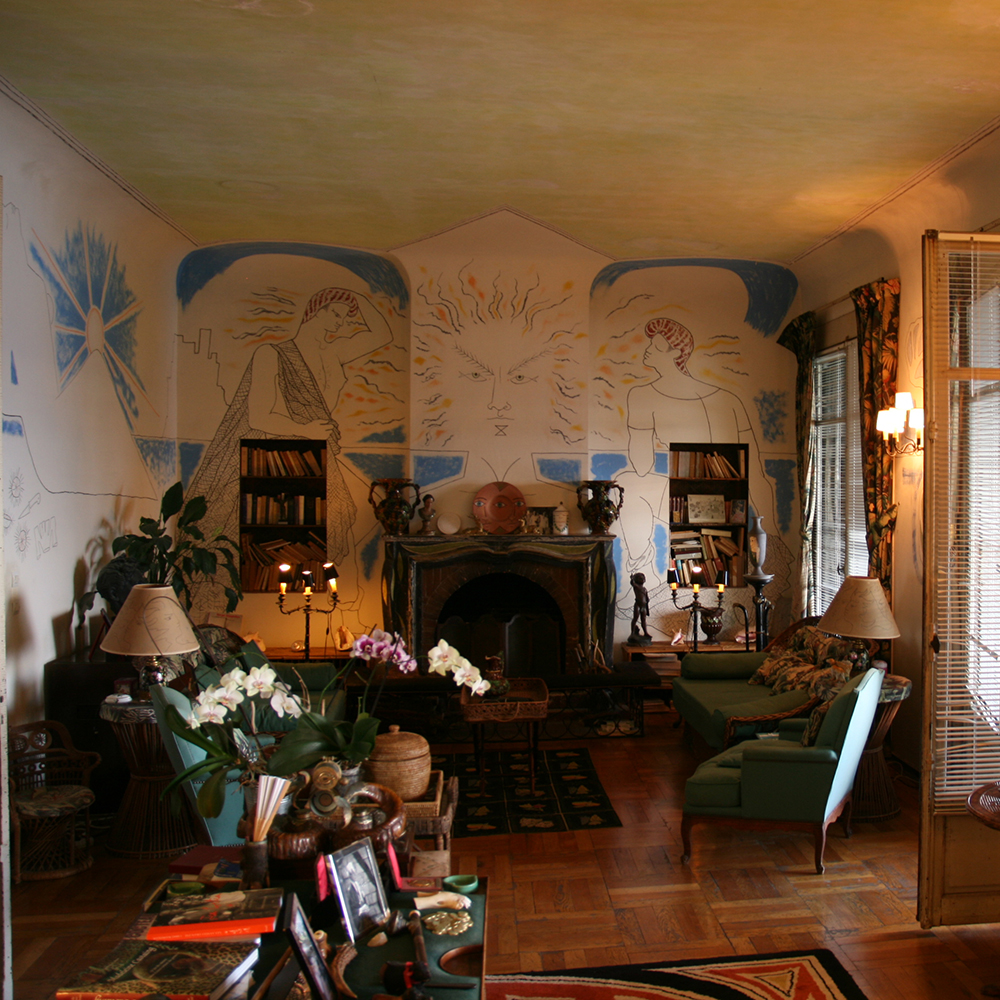
Cocteau did the entire house without sketches, drawing directly on the walls and on or around the furniture. He drew first in charcoal, then in tempera – a paint made from pigments mixed with raw milk, used since Antiquity for its durability and the vibrant finish of its colors. The themes dear to the poet were those of the Mediterranean – its fishermen, the sun, the night – and above all, Greek mythology.
“The walls didn’t need to be dressed, they had to be drawn on like skin,” he explained. “That’s why I treated the frescoes linearly, with skin-toned colours to bring out the tattoos. Santo Sospir is a tattooed villa.”
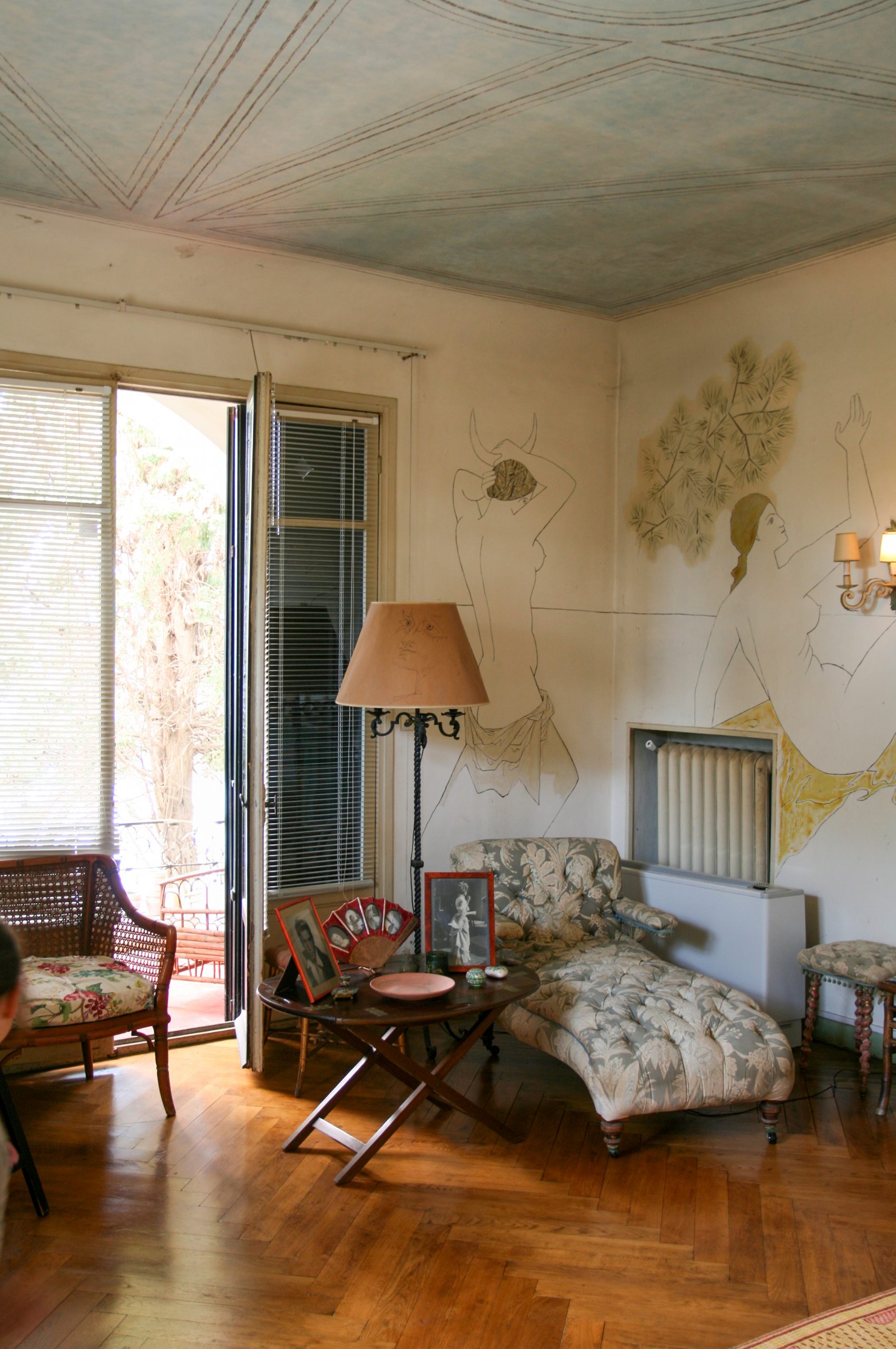
After the walls, Cocteau found the ceilings too white: he adorned them with geometric motifs in pastel tones. He also created two mosaics for the entrance patio (a serpent, two faces and a head of Orpheus), then in 1953 gave Francine a tapestry: Judith and Holofernes, created in Milly-la-Forêt. The tapestry still hangs in the wicker-covered dining room, along with rattan furniture. All the furniture and fabrics were selected in close collaboration with Madeleine Castaing, renowned decorator and friend of Francine, whose refined taste and expertise helped carry forward the decorative momentum begun by Cocteau.
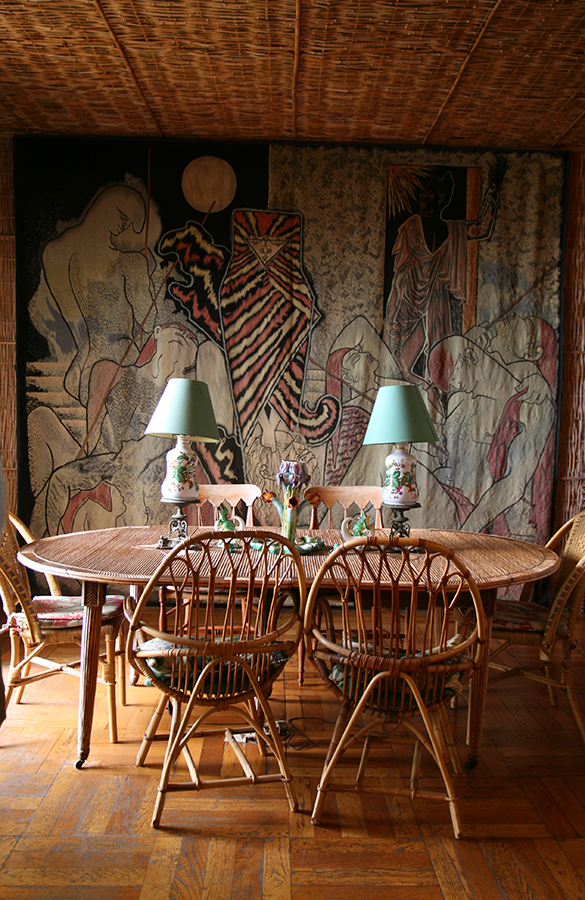
In Francine Weisweiller’s bedroom, a nymph prepares to punish Actaeon, who had surprised Diana at her toilette. A mythological shepherd watches over her bed. The bedroom of her daughter Carole was also painted by Cocteau.
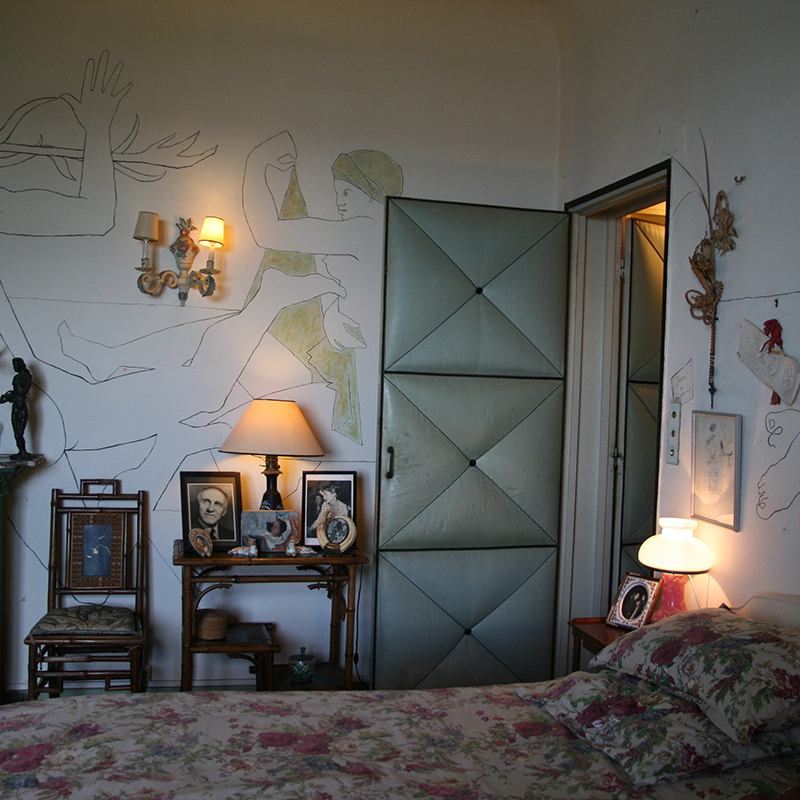
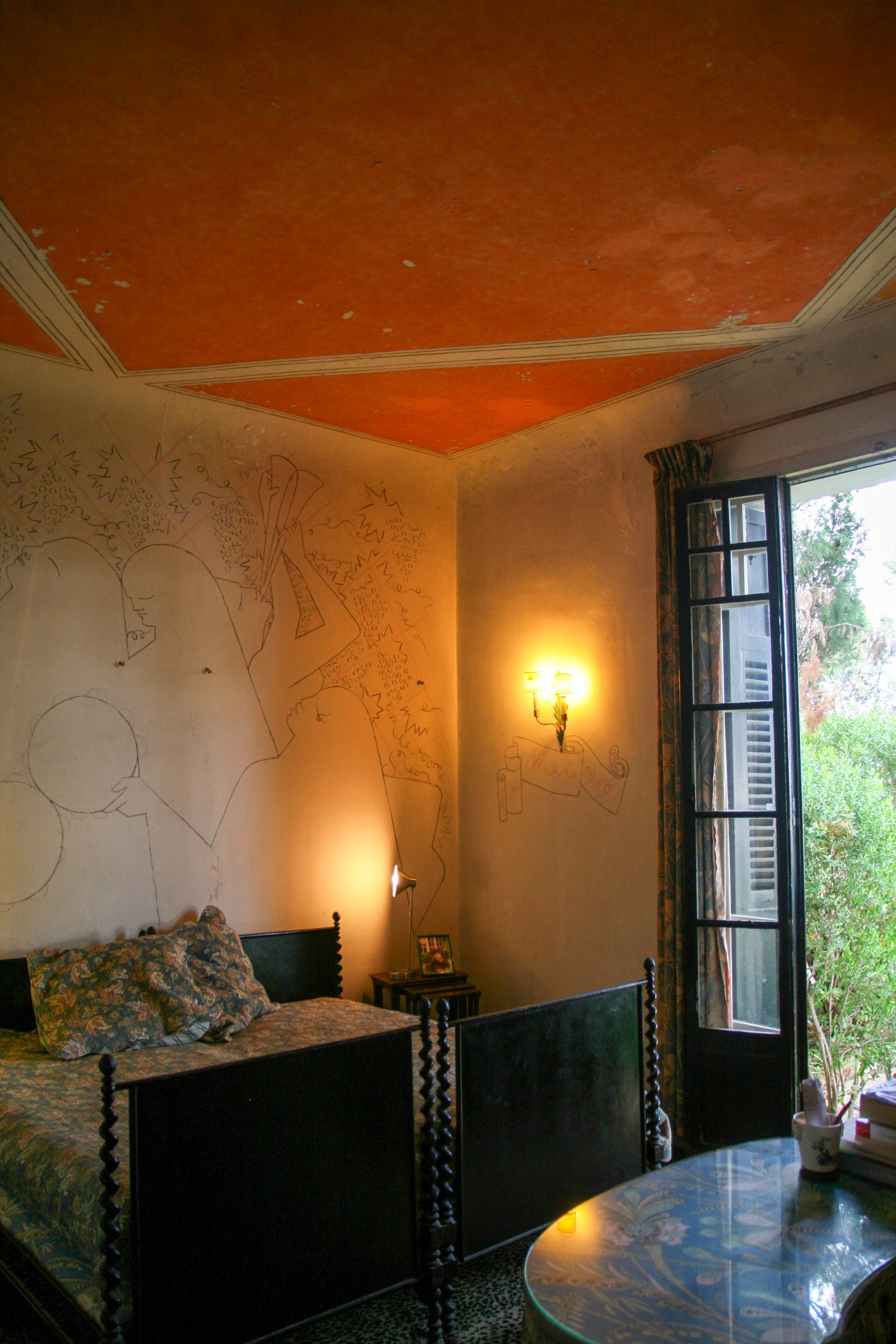
Eric – Francine’s former nurse, who later became the villa’s caretaker and welcomed us for the visit – remembers the cocktails Cocteau would prepare for passing guests: Pablo Picasso and Jacqueline, Coco Chanel, Greta Garbo, Francis Poulenc…
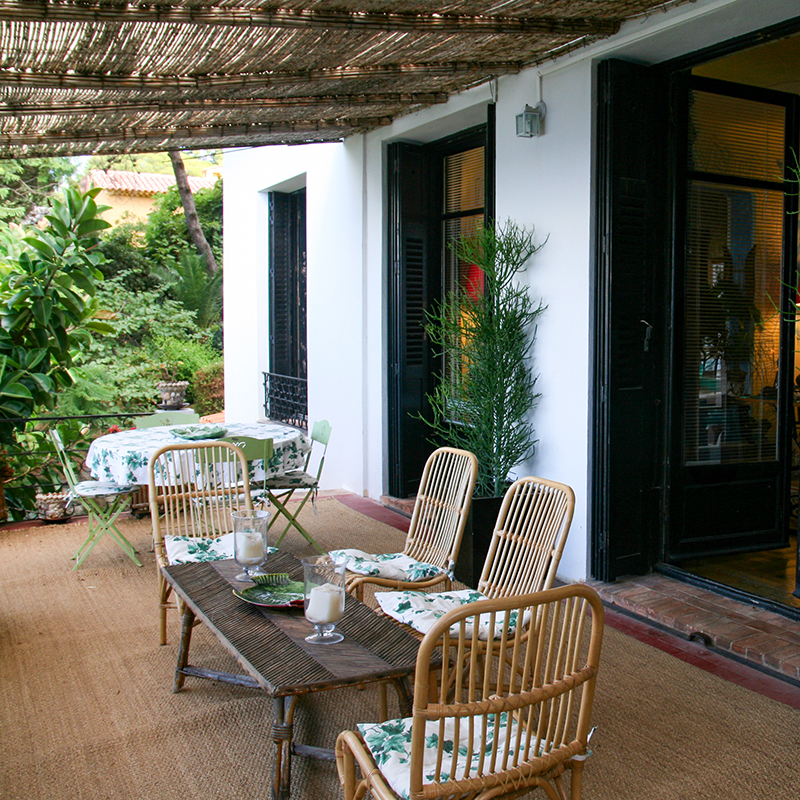
“Picasso, Matisse, Chagall, and I – on this coast where Renoir once lived – we tried to overcome the spirit of destruction that ruled the time. We adorned the surfaces men dream of destroying. Perhaps the love of our work will protect them from the bombs.” Jean Cocteau
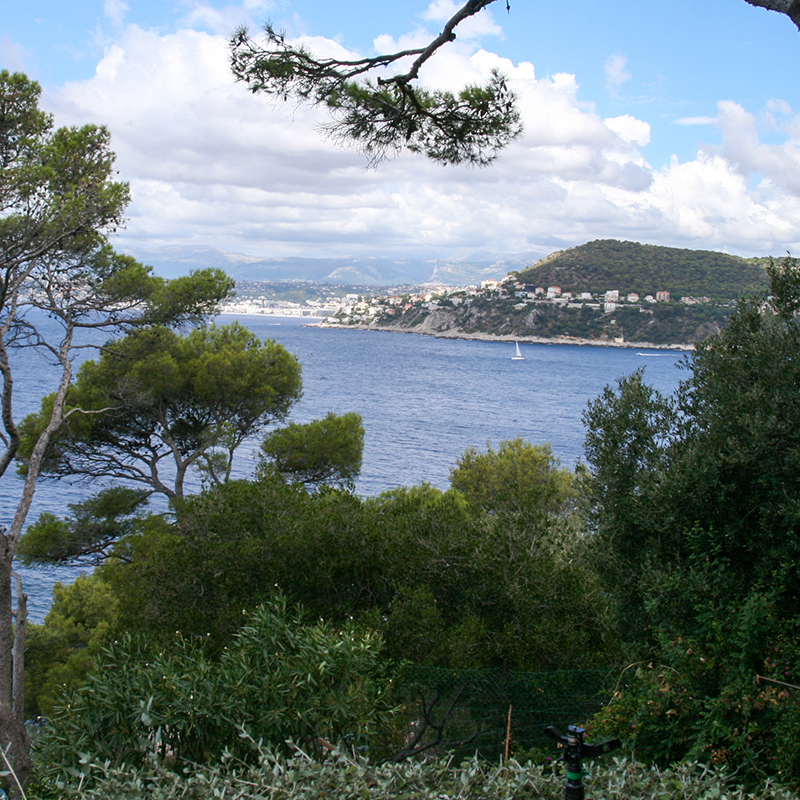
Shop the Look



